Medieval art has always been a fascinating subject for art lovers and historians alike. From the intricate details of illuminated manuscripts to the grandeur of Gothic cathedrals, medieval art offers a glimpse into the cultural and religious practices of the time. However, for the uninitiated, it can be overwhelming to navigate the vast array of artworks that spanned over a thousand years of history.
In this article, we will delve into some of the most iconic medieval artworks, analyzing their style, symbolism, and historical context. From the famous Ognissanti Madonna by Giotto to the Ghent Altarpiece by Jan van Eyck, we will explore the unique features that make each artwork a masterpiece of its own. Whether you’re an art enthusiast or a curious learner, this article will
1. Ognissanti Madonna – Giotto
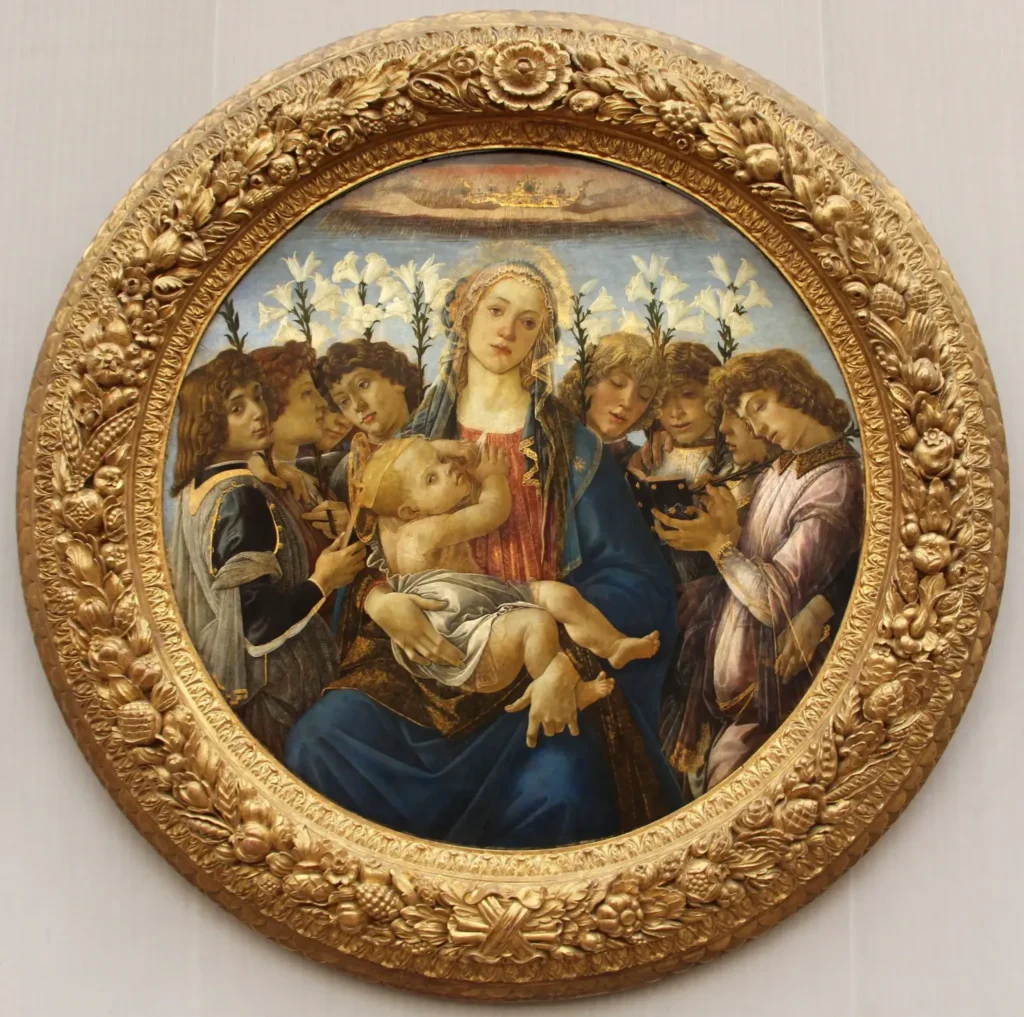
The Ognissanti Madonna is a painting by the renowned Italian artist Giotto di Bondone, completed around 1310 and housed in the Uffizi Gallery in Florence. Originally intended for the high altar of the Ognissanti Franciscan church in Florence, this painting represents a significant milestone in the transition from Medieval to Renaissance art.
The significance of this artwork lies in its naturalistic portrayal of a traditional religious subject. The Madonna and Child are depicted with lifelike proportions and gentle expressions, creating an emotional connection between them and the viewer. This naturalism stands out amidst the stylized iconography prevalent during Medieval times
Giotto is also recognized as one of the first Renaissance artists who moved away from Byzantine art conventions. His work with light, shadow, and depth creates an illusion of space that sets him apart from his predecessors.
The Ognissanti Madonna is an important piece of art history, marking a turning point towards more realistic portrayals that define Renaissance Art. As one of Giotto’s significant works emphasizing his breakaway style from Byzantine influences- it serves as an excellent example to students studying early Renaissance artwork or those who wish to learn more about Giotto’s influence on art history.
2. Wilton Diptych – (c. 1395 – 1399)
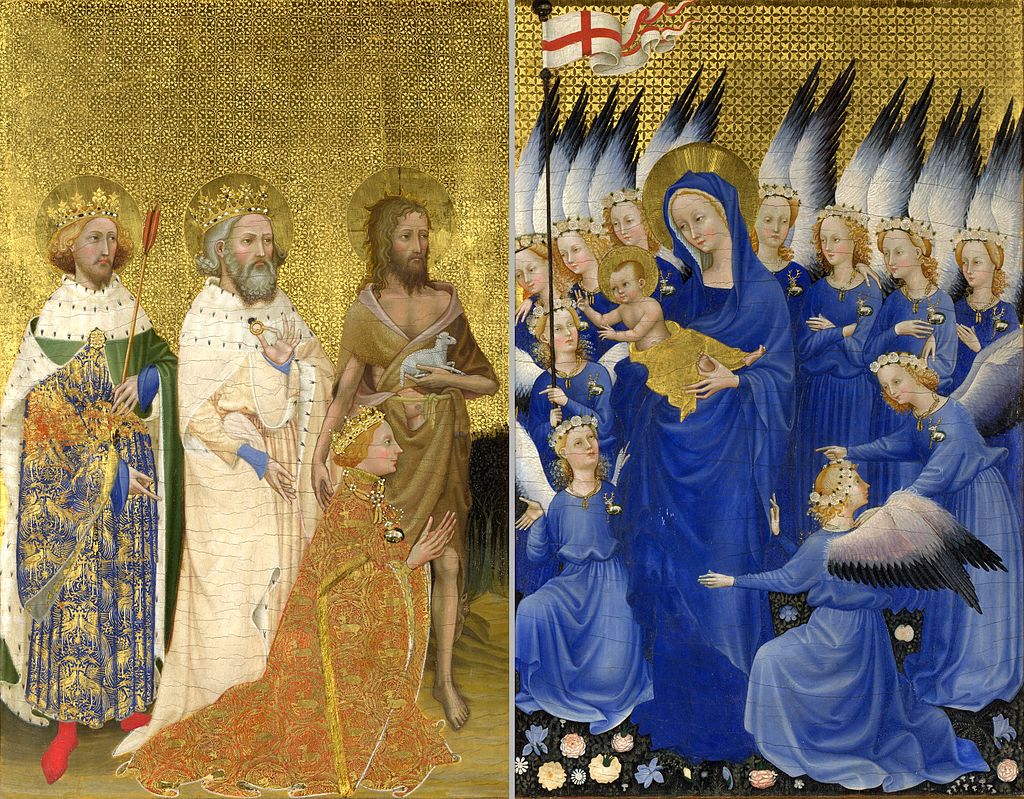
The Wilton Diptych is a valuable diptych consisting of two hinged panels from the late medieval era in England. It depicts Richard II’s presentation to the Virgin and Child, and it was created approximately around the time of his second marriage in 1396. This piece is an excellent example of a religious panel painting from this period and is regarded as one of England’s best.
Despite its significance, there are still many aspects that are unknown about The Wilton Diptych. Its artist, place of origin, and location remain shrouded in mystery despite much speculation. However, based on its exceptional quality, many experts have suggested that it may have been painted for royal patronage.
The painting comprises intricate details such as the gilded background, radiant colors used on Mary’s garments creating luminance for her peach-colored veil etc. These subtle features reflect how devotedly people clung to religion and perceived Mary as heaven’s mother figure during medieval times.
While much remains unknown about The Wilton Diptych’s origins, what we do know about this exceptional piece places it within a unique niche among other medieval artworks. Its intricacy highlights not only remarkable craftsmanship but also reflects on how important religion was to people during this period.
3. Lamentation (The Mourning of Christ) – Giotto, 1306
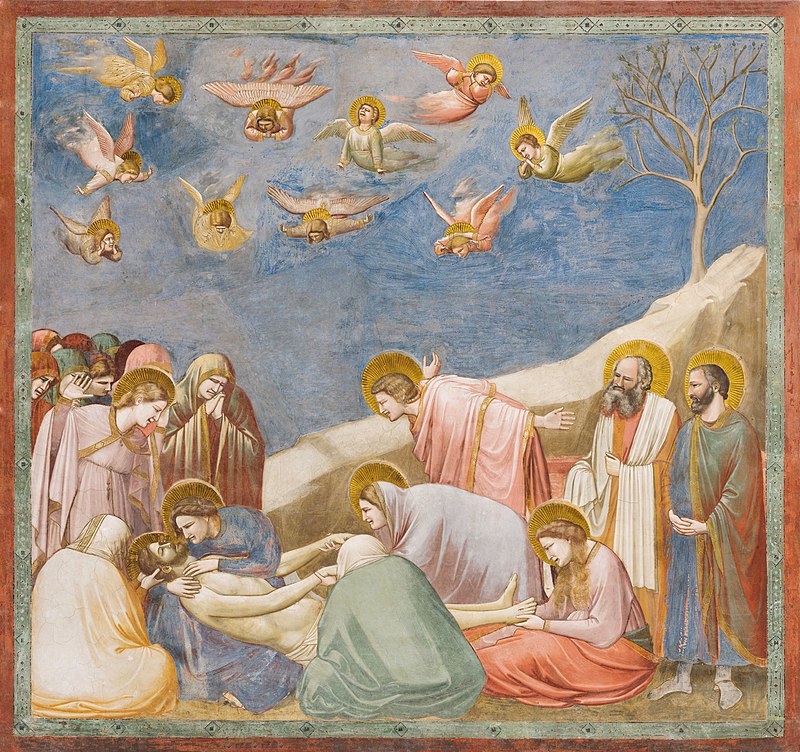
Giotto’s Lamentation, painted in 1306, is a fresco that can be found in the Scrovegni Chapel in Padua, Italy. The painting depicts Mary after the death of Jesus and highlights Christ’s humanity through its naturalism and emotional depth. This artwork marked Giotto’s break from Byzantine artistic techniques and introduced a new sense of humanism into medieval art.
Giotto is often regarded as one of the first masters of Italian Renaissance art due to his innovative style that emphasized realism and emotion. His portrayal of grief in Lamentation can be seen through both angels and human figures expressing sadness in various ways.
4. Ghent Altarpiece – Jan Van Eyck, 1432
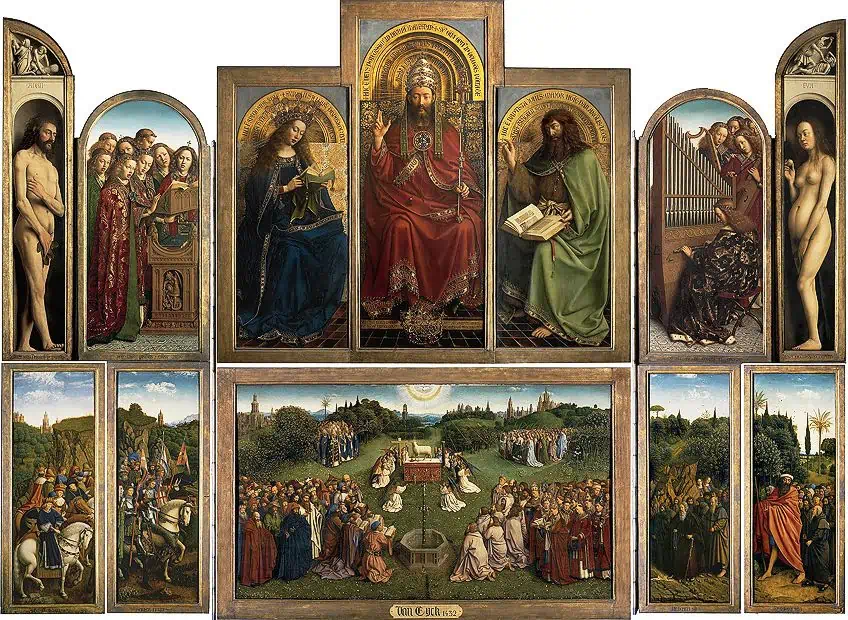
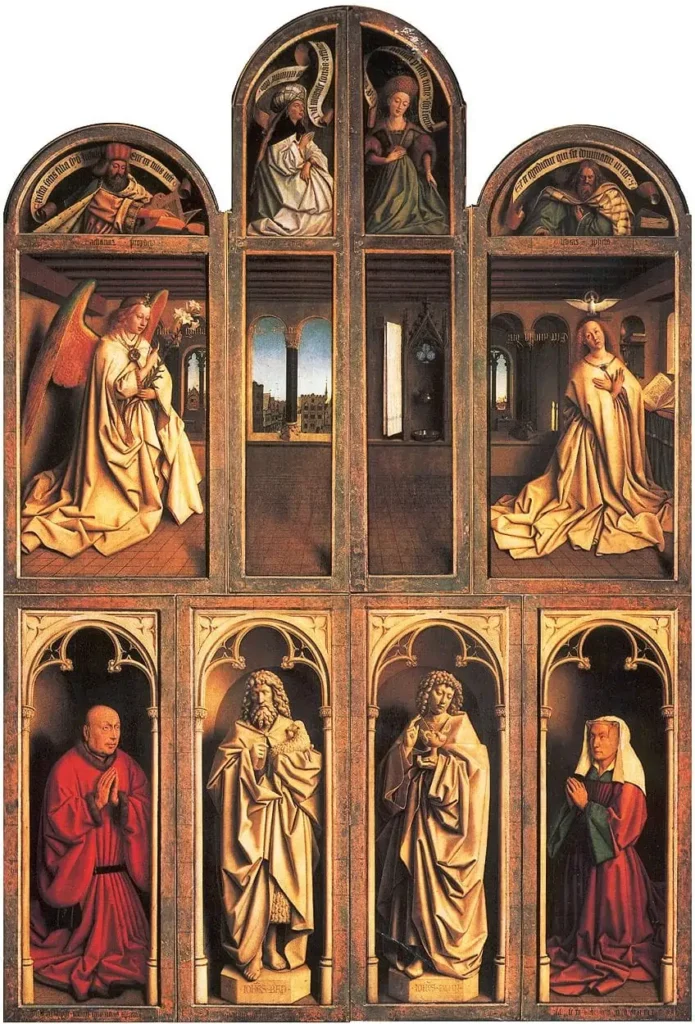
The Ghent Altarpiece is a polyptych altarpiece created by Jan and Hubert van Eyck in 1432. This Netherlandish Renaissance masterpiece has undergone several restorations and has suffered damage over time. The original piece may have included clockwork mechanisms and music, adding to its impressive complexity.
Belgium’s Royal Institute for Cultural Heritage with support from the Getty Foundation recently conducted another restoration effort on the altarpiece. This includes cleaning, repairing damaged pieces, and returning the original colors to their vibrant states.
As a cultural cornerstone of Medieval Christian art, the Ghent Altarpiece is well-known throughout Europe. Its intricate design features panels with various scenes depicting biblical stories. Each panel showcases van Eyck’s incredible attention to detail through his use of color, light, and shadow.
Despite its age, the Ghent Altarpiece remains an awe-inspiring work of art that continues to captivate viewers worldwide. Its importance extends beyond religious iconography as it serves as a representation of Medieval European history and artistic innovation during that time period.
5. Paradiesgärtlein – Upper Rhenish Master, 1410
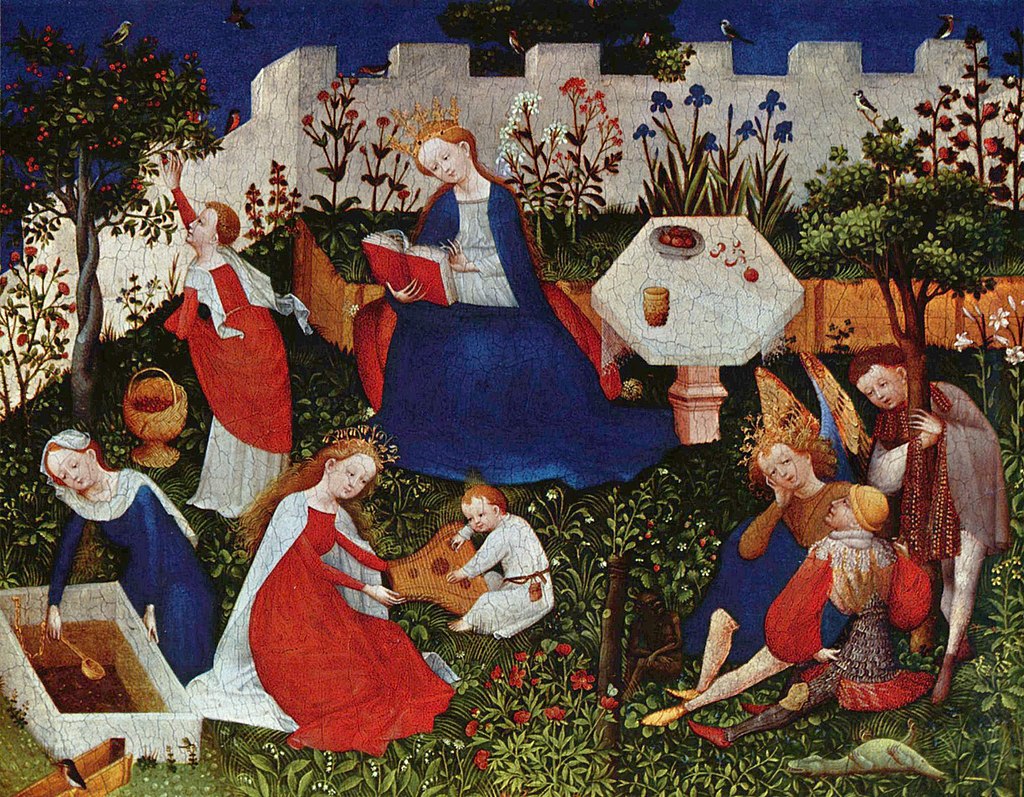
The Paradiesgärtlein is a painting executed in mixed techniques on wood and was created around 1410 by an unknown painter referred to as Upper Rhenish Master. The artwork belongs to the Mary in the rose bower type and depicts the Garden of Paradise. At about 26 by 33 centimeters, it is one of his earliest paintings that naturalistically depicts flora and fauna.
The Upper Rhenish Master was active ca. 1410-20 possibly in Strasbourg and is known for mastering the use of symbols while making the heavenly concept of afterlife emotionally palpable in his paintings. The Paradiesgärtlein exemplifies this mastery, specifically portraying religious iconography with numerology significance placed within a garden environment, representing Paradise.
The Städel Museum in Frankfurt possesses this artwork as their most famous example from the old German school. It’s highly recognized as one of Upper Rhine’s most impressive achievements around 1400s diminutive panel format, allowing for intricate details using mixed techniques such as watercolor pigments reduced with glair egg tempera tensions to bring out every detail expertly.
6. Trinity – Andrei Rublev, 1425
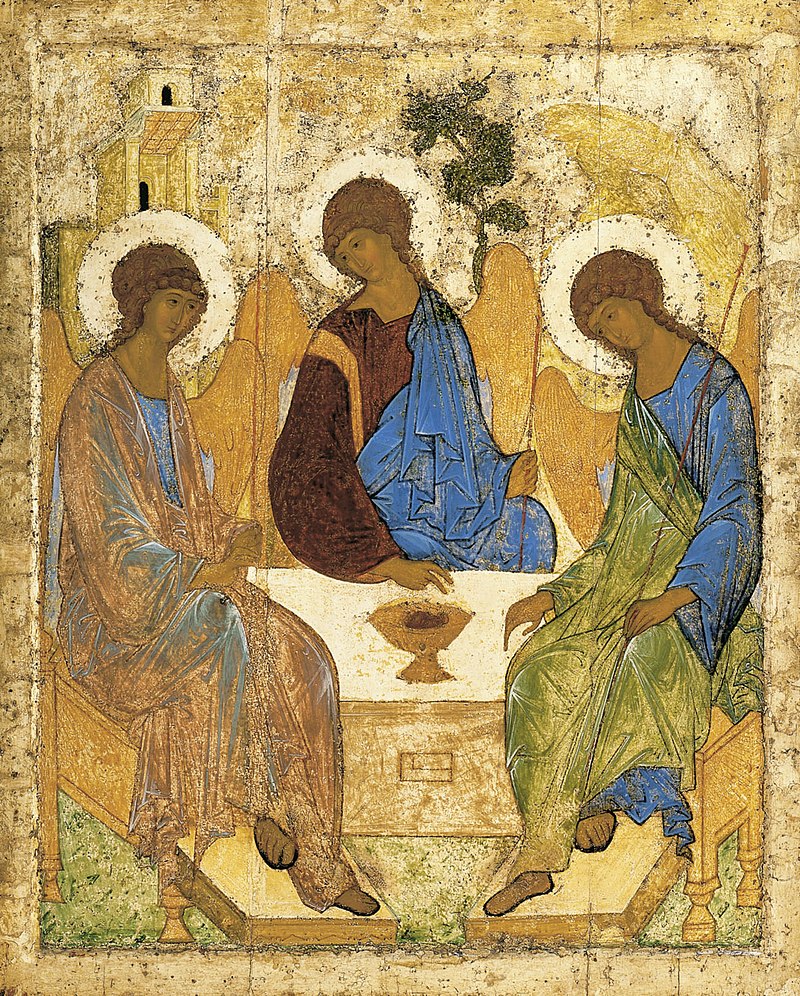
Andrei Rublev’s “The Trinity” is an iconic Russian artwork painted vertically on wood in the early 15th century. The painting depicts three angels at a table with a cup containing the head of a calf and a background of Abraham’s house, Oak of Mamre, and Mount Moriah. This image is interpreted as representing the Holy Trinity symbolizing spiritual unity, peace, harmony, mutual love, and humility. Rublev highly valued tradition and collective effort to the extent that he became an exception to the general anonymity of Orthodox iconographers.
Rublev’s “The Trinity” is considered one of Russia’s highest achievements in medieval artwork. Direct representations of the Trinity are rare in Eastern Orthodox art; hence this painting has become so prominent globally. The combination of Rublev’s unique style and subject matter portray an extraordinary creation earning its significance as one of his best artworks ever created.
“The Trinity” by Andrei Rublev remains one of Russia’s most significant works due to its exceptional craftsmanship, stunning imagery which combines exemplary use of color technique with intricate detailing visible through every square inch. It paints an entirely captivating picture that captures the essence of peace and unity represented by spiritual beings around Abraham’s oak tree.
7. Holy Trinity – Masaccio – C.1426-1428
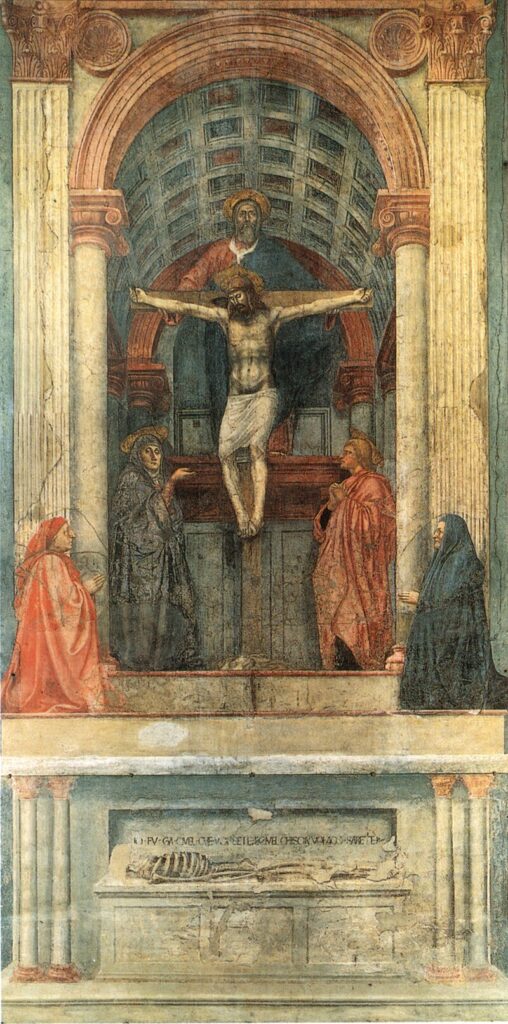
Masaccio’s Holy Trinity artwork is a fresco that was produced between 1425 and 1427. It is considered one of his last paintings before he passed away at the young age of 27. The painting showcases the execution of Jesus and features three key figures: the Trinity (Father, Son, and Holy Spirit), the Virgin, and Saint John.
What sets apart Masaccio’s work from his predecessors is how he incorporated Brunelleschi’s discovery of linear perspective to create a more realistic representation of space. This technique was used in the Holy Trinity fresco in Santa Maria Novella in Florence – making Masaccio one of the first Renaissance painters to do so. Each figure is painted roughly life-size, creating an astonishing spatial illusion contributing to this painting’s depiction that draws viewers into its depth.
The painting itself is housed in Florence, Italy – specifically located inside the Dominican church known as Santa Maria Novella.
8. Annunciation – Jan Van Eyck, 1436
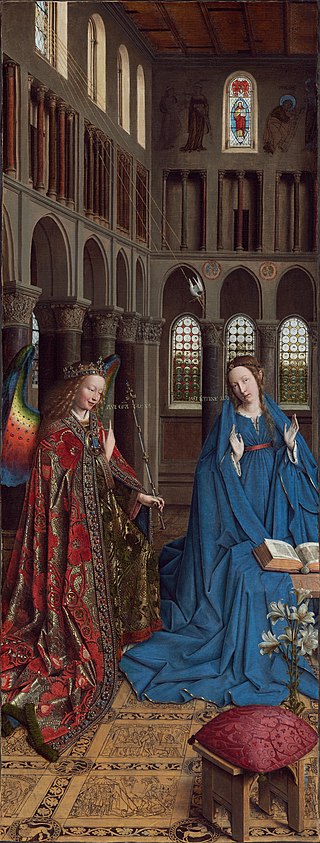
Jan van Eyck’s oil painting, “The Annunciation,” is a masterful piece of Medieval artwork dating back to 1436. The painting depicts the moment in which Archangel Gabriel announces to the Virgin Mary that she will bear the son of God. This complex work of art is rich in symbolism, iconography, and stylistic detail.
The figure and iconography in “The Annunciation” are similar to those found in “Diptych of the Annunciation,” another Van Eyck masterpiece. Van Eyck was credited with originating a highly detailed style of painting characterized by minutely realistic depictions of surface effects and natural light.
“The Annunciation” is an outstanding example of this style, featuring incredible levels of detail that enhance its realism. The work’s intricate composition includes figures such as a holy dove hovering over Mary and items like lilies symbolizing purity. Moreover, as an artist who worked closely with oil paints materials at a time when their use was uncommon, Jan van Eyck’s innovation marked him as one among the greatest artists born towards the end part of that century.
9. Kiss Of Judas – Giotto, 1306
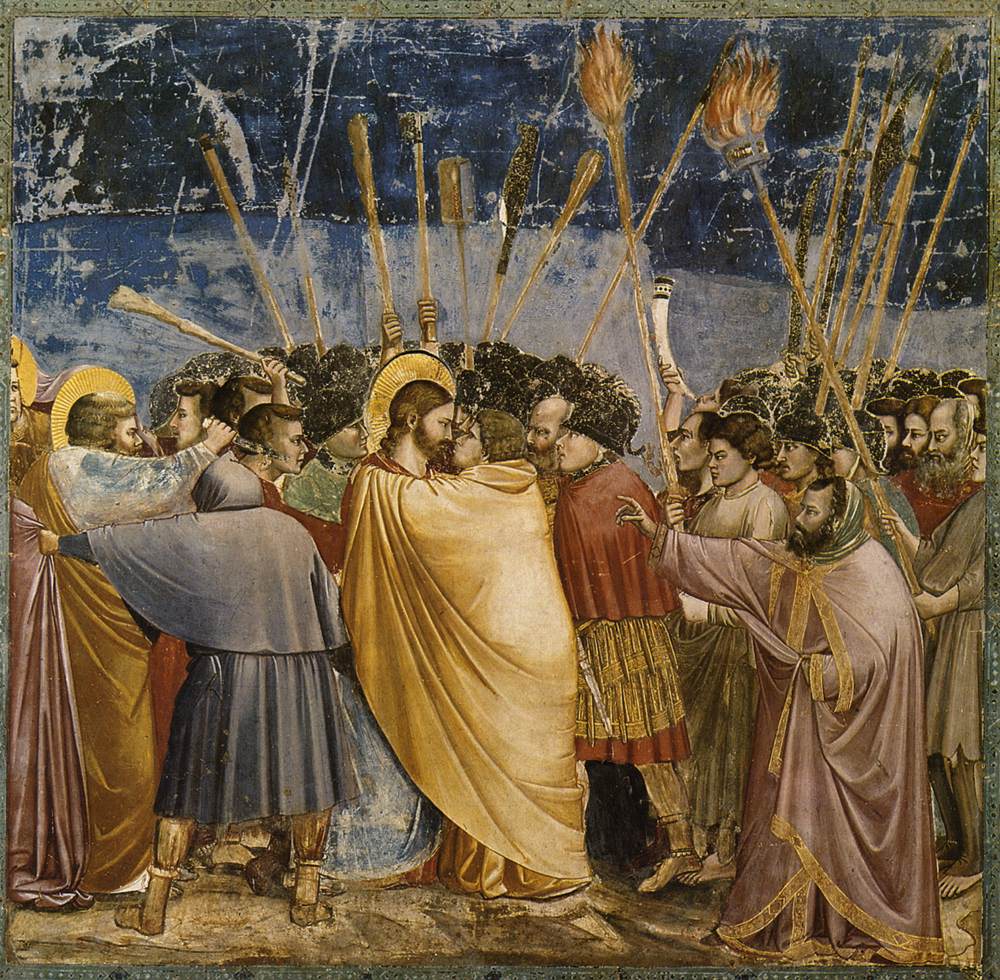
Giotto’s Kiss of Judas, painted in 1306, depicts the biblical event where Jesus is betrayed by his disciple Judas. This painting is a powerful representation of that moment in Christian history and has come to be recognized as one of the most significant artworks of the medieval period.
Beyond its religious significance, The Kiss of Judas also heralds an era in art characterized by realistic emotionalism. Giotto incorporates this trend masterfully with life-like depictions of human facial expressions. The emotions on display are those of shock and betrayal that are felt keenly by both Jesus and his followers at this critical juncture.
One can appreciate Giotto’s skillful use of light and shadow to intensify these emotional states further. There is a sense in which every element: faces, clothing fabric folds, or architecture all coalesce visually to underscore each other’s dramatic qualities while allowing greater illumination on central figures.
10. Santa Trinita Maestà – Cimabue, 1286
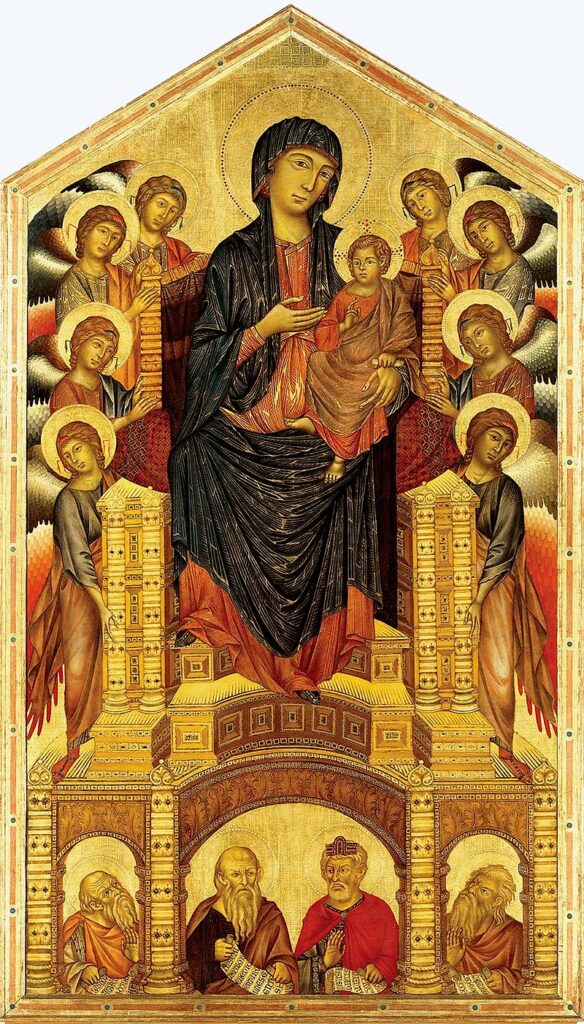
Santa Trinita Maestà is a panel painted by Cimabue for the church of Santa Trinita in Florence. The painting, which was probably created around 1280, measures over twelve feet tall and seven feet wide. It portrays Mary gazing at the viewer with Christ depicted as a grown man, displaying his wisdom and ultimate purpose (Important).
The exact date of creation is debated, although it is believed to be between 1280 and 1300. It was most likely commissioned by the Vallombrosans, a monastic order of the Catholic Church. Today, Santa Trinita Maestà is housed in the Uffizi Gallery in Florence (Important).
The painting is considered to be significant artwork in terms of bridging medieval art into modern Italian art underlining its contextual importance and artistic legacy (Important). Its immense size demonstrates an accomplished mastery over composition techniques during that time period that can inspire many contemporary artists today. Furthermore, it gives on-lookers an insight into iconic medieval religious paintings dating back centuries (Important).
11. Presentation At The Temple – Ambrogio Lorenzetti, 1342
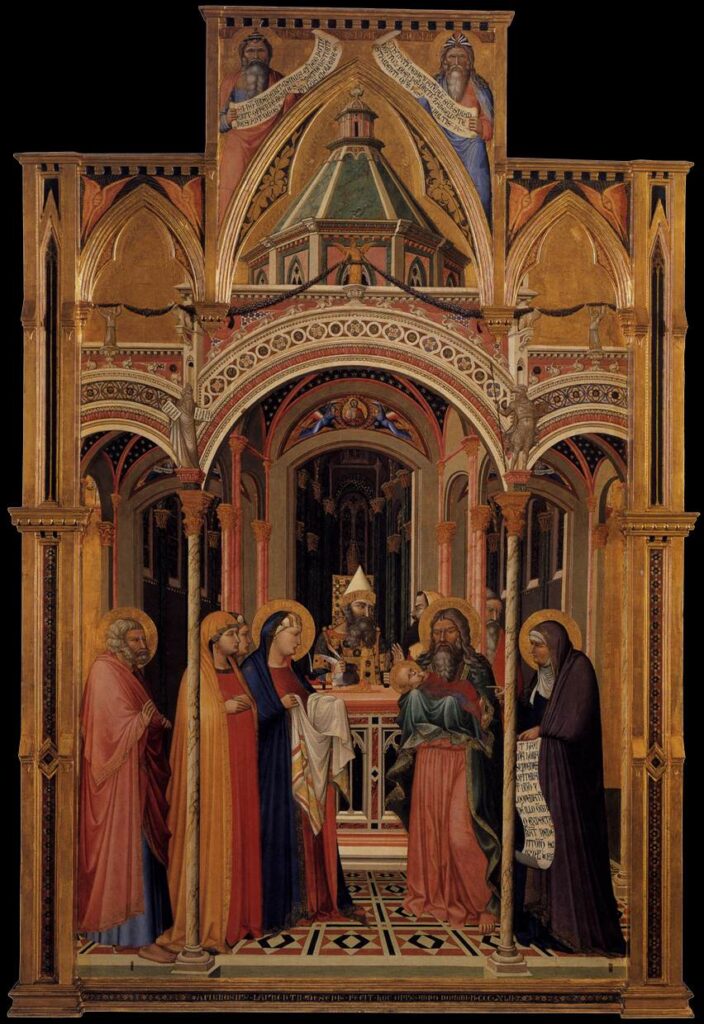
Ambrogio Lorenzetti’s painting, Presentation at the Temple, is a masterpiece of Italian medieval artwork. This signed and dated painting from 1342 depicts the purification of Mary and her presentation to Simeon and prophetess Anna according to Hebrew rituals. The central figure is Mary, holding her son out for recognition by Simeon and Anna. They both acknowledge Jesus as the Messiah.
The composition of the painting is notable for its use of linear perspective, which Lorenzetti explored widely in his work. This visual technique lends a sense of depth and space to the scene. With precision in detail, he captures intricate facial expressions that convey emotion conveying awe, reverence and humility.
The piece is one of Lorenzetti’s largest works as well as one of five paintings signed by him with date. Housed at Florence’s Uffizi Gallery since 1913. It remains a testament to his profound visual interpretation skills utilized in artistry during this period.
12. Crucifixion – Giotto, 1320
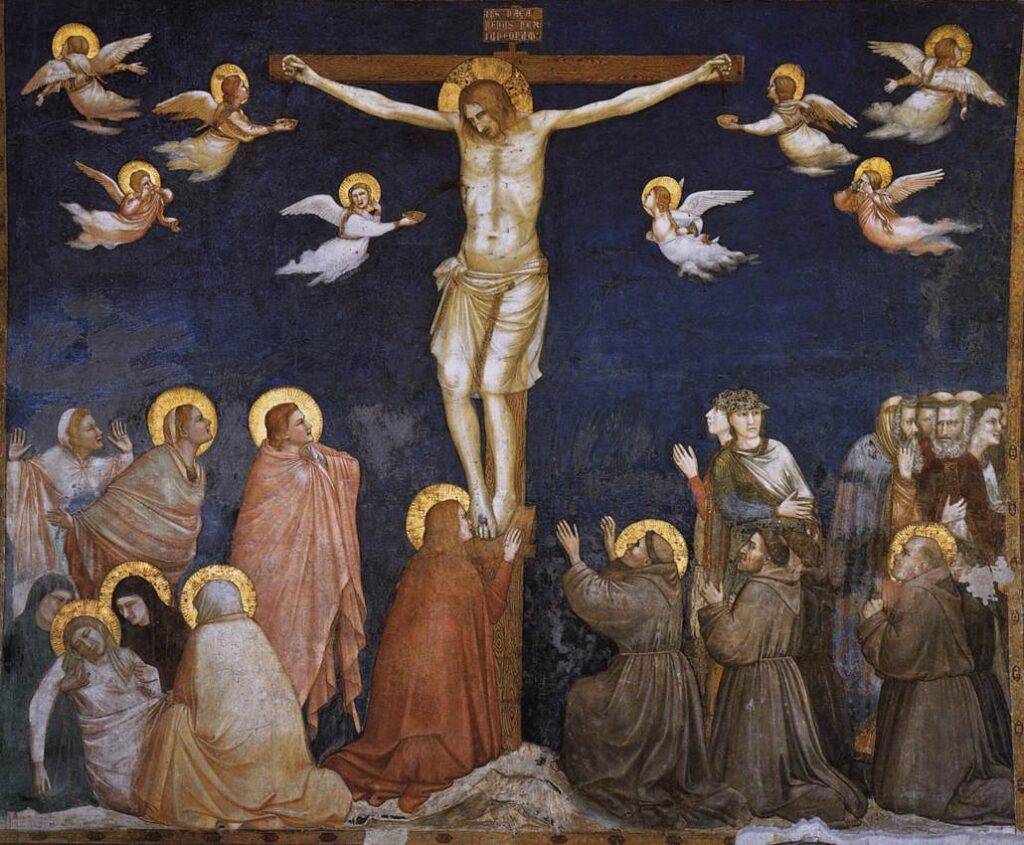
Italian artist Giotto produced a number of Crucifixion paintings during the 14th century. One notable piece is a tempera painting on wood panel commissioned by Dominican priests for the church of Santa Maria Novella. Completed around 1320, this painting stands out for its realistic portrayal of Christ’s agony on the cross and its use of vivid colors.
Giotto’s Crucifixion is part of a larger artistic tradition that spans across different stages of the Italian Renaissance and Northern European art. The subject matter was a common theme in Giotto’s workshop, and many other artists also created works based on this religious event. Comparing these different depictions can reveal stylistic differences and similarities across regions.
13. Maestà (c. 1308 – 1311) By Duccio Di Buoninsegna
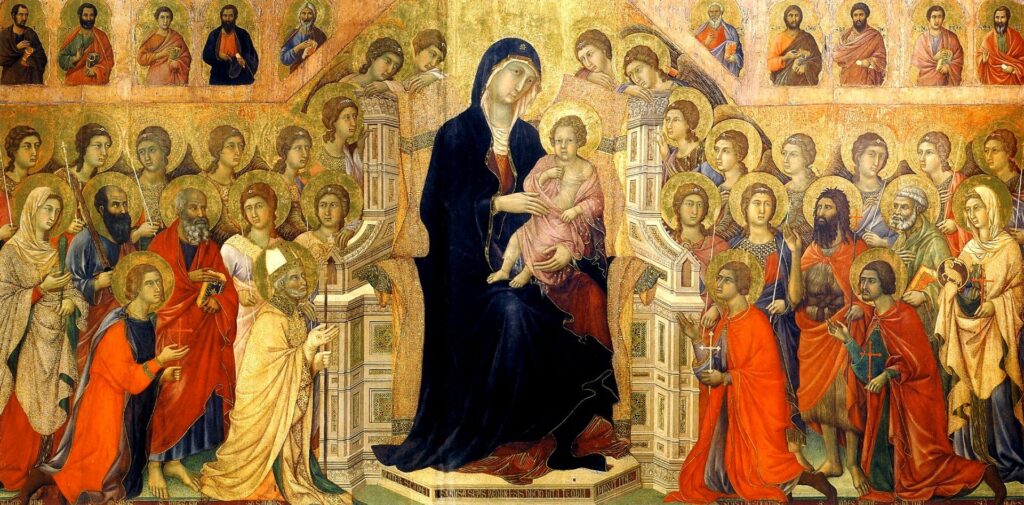
Duccio di Buoninsegna’s Maestà is one of the most significant works of medieval art, completed in the early 14th century. Commissioned by the city of Siena, it is made up of many individual paintings that form a large enthroned Madonna and Child with saints and angels. It comprises a central panel featuring an impressive portrait of Madonna and Child surrounded by angels and saints. The painting also incorporates several more supporting works to complete its complex altarpiece design.
The Maestà was highly ambitious artwork by Duccio that dominated Siena’s cathedral altar for almost two centuries. The painting features a predella or a lower part which showcases scenes from the Childhood of Christ with prophets. Duccio was among the greatest Italian painters who founded the Sienese school, renowned for their distinctive style in religious paintings.
Today, The Maestà stands as among the best-known works of Medieval art and remains as one of the largest ever made panel painting. Its grandeur remains intact despite various restoration attempts over hundreds of years. Considered as an epitome for religious art lovers, it is considered to be one of Europe’s most treasured works from this era due to its creative excellence and masterful craftsmanship showcasing remarkable complexity while delivering pure aesthetic treatment deserving appreciation even today.
14. Annunciation With St. Margaret And St. Ansanus (1333) By Simone Martini And Lippo Memmi
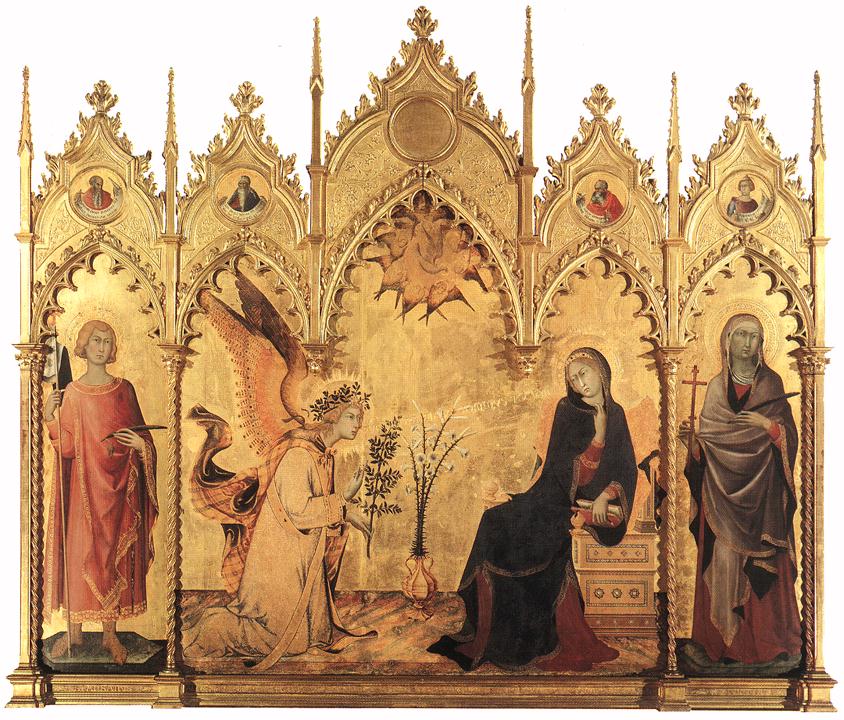
The Annunciation with St. Margaret and St. Ansanus, a wooden triptych created in 1333 by Simone Martini and Lippo Memmi, is a masterpiece of Gothic painting in the International Gothic style. Originally painted for the altar of St. Ansanus in Siena’s Duomo, this painting is considered one of the outstanding works of Gothic art.
The central panel depicts the scene of the Annunciation with incredible refinement and descriptive powers. Mary’s acceptance to bear God’s son appears almost human due to Martini’s mastery technique who was recognized by poet Petrarch at that time. In addition to portraying religious symbols with nuanced emotion and realism, Martini used tempera and gold on wood to transport viewers into an ethereal world.
It is noteworthy that this work showcases several hallmarks of International Gothic painting, including soft lines, curving movements, ornate detailings around set pieces adorned with golden colors throughout; making it truly exceptional among other artworks made during that period. The Annunciation with St.Margaret and Ansanus remains an enduring symbol not only for its historically significant themes but also for its remarkable technical accomplishment as an artwork testimony from medieval times.
15. The Allegory Of Good And Bad Government (c. 1338 – 1339) By Ambrogio Lorenzetti
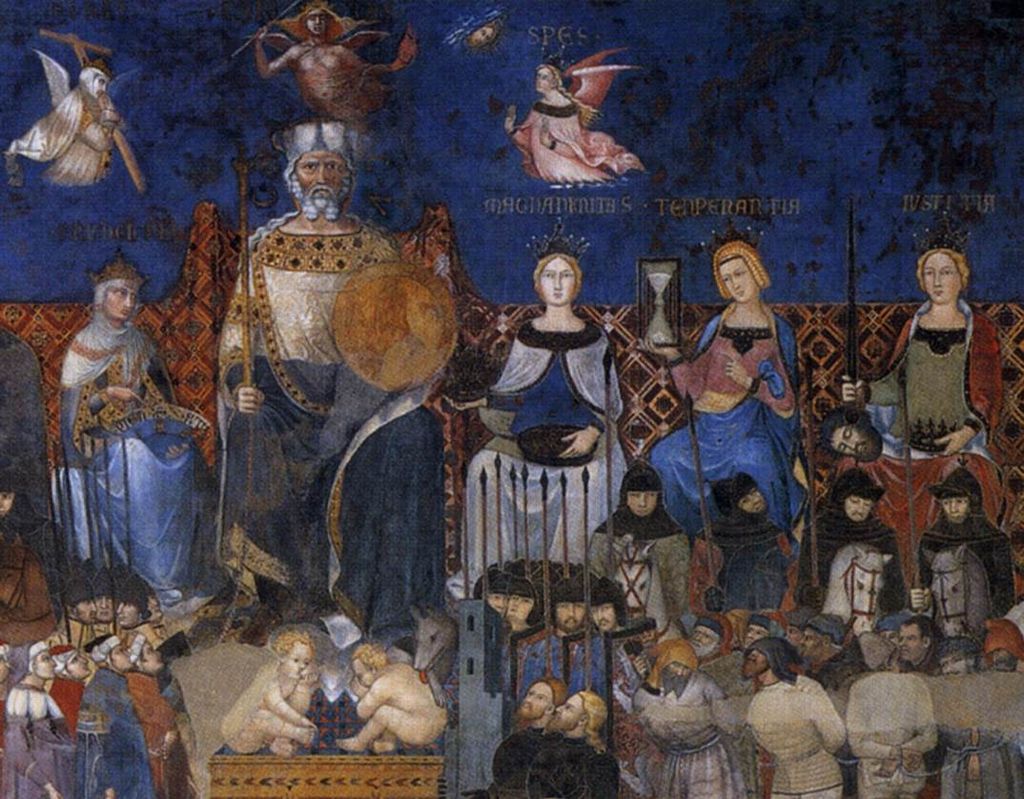
The Allegory of Good and Bad Government is a revolutionary painting cycle created by Ambrogio Lorenzetti between 1338 and 1339 in the town hall of Siena, Italy. It consists of three panels that depict the consequences of good and bad governance in both rural and urban settings. The frescoes are considered one of the most significant works of medieval Italian art due to their secular nature, groundbreaking subject matter, and innovative landscape depictions.
The series was painted for the Sala dei Nove, where the city’s Nine Elders met. They were responsible for governing Siena at a time when political unrest was rampant throughout Europe. The Allegory boldly explores various aspects of good governance, including justice, harmony, safety, prosperity, and hope. Conversely, it also portrays the devastating effects of bad governance such as poverty, corruption, violence, disease outbreaks – factors that impacted ordinary people’s everyday lives.
Moreover , what makes this artwork unique is its focus on landscape depictions which had not commonly been seen in medieval European art since Rome’s fall. Lush landscapes with carefully constructed compositions have been incorporated into each panel to provide an immersive experience into the more immediate effects that social cohesion or unrest has on day-to-day living in both country and city life.
16. Crucifixion Altarpiece (c. 1394 – 1399) By Melchior Broederlam
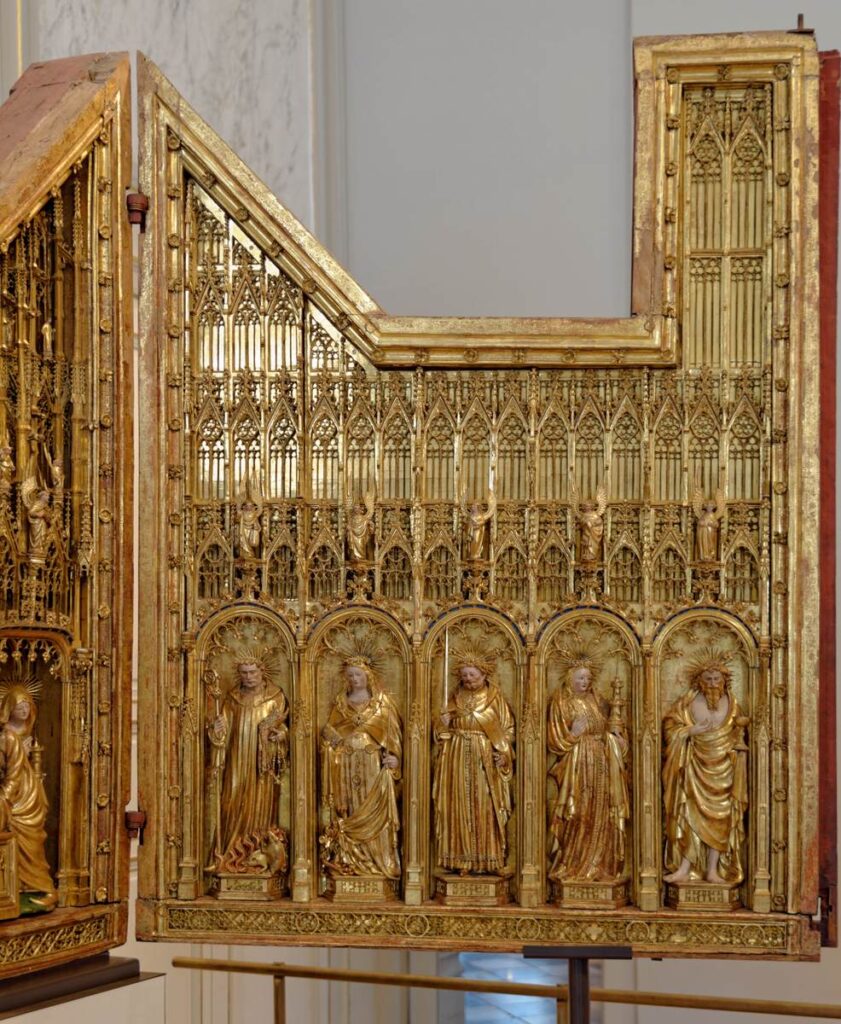
The Crucifixion Altarpiece, a 14th century Gothic painting, was created by Flemish artist Melchior Broederlam between 1394 and 1399. This masterpiece is one of the most significant works in the history of medieval art due to its intricate design and symbolism.
The altarpiece stands at over two meters tall and presents a complex iconography featuring episodes from the Passion of Christ. The central panel portrays Jesus on the cross accompanied by figures such as Mary, John the Baptist, and St. John evoking their grief and sadness towards Jesus’ death. The narrative continues in six small side panels that depict events such as Christ’s arrest and trial.
Broederlam’s use of intricate details and vibrant colors made this artwork an exceptional addition to Gothic art movement developments. It also shows an early example of panel portraiture which would become increasingly important in European art movements during the next century.
The Crucifixion Altarpiece not only has great artistic value but also historical significance given its connections to both religious iconography styles and medieval society practices when it was first commissioned for display within chapels or churches setting up altars used for worship services.
17. Adoration Of The Magi (1423) By Gentile Da Fabriano
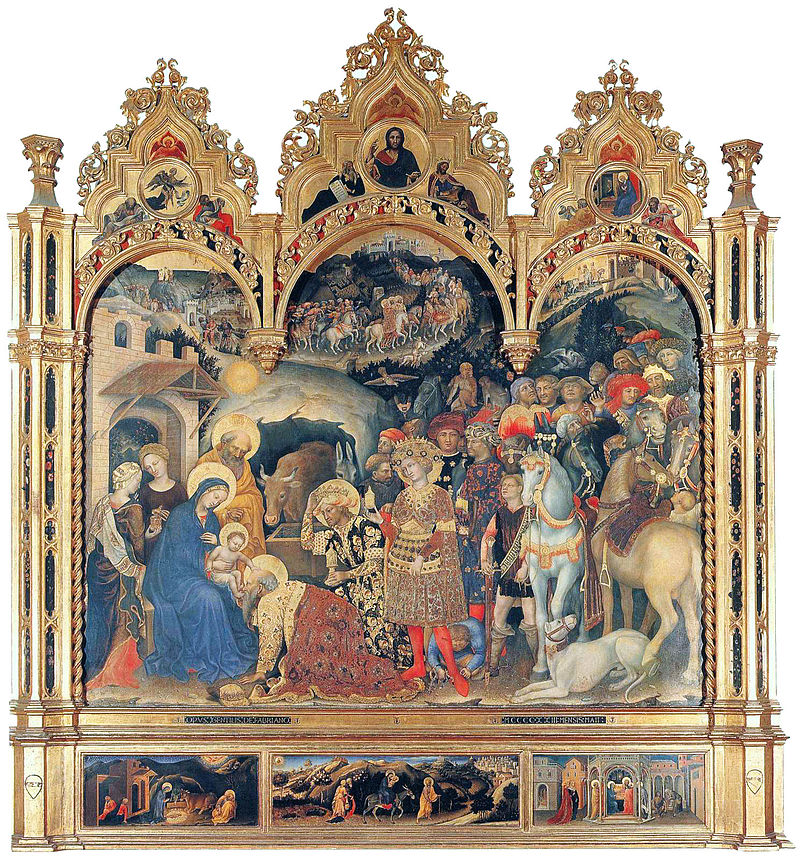
Gentile da Fabriano’s Adoration of the Magi is a large tempera on wood painting that is considered one of the finest works of International Gothic painting. This masterpiece depicts the story of the Three Kings offering gifts to the newborn Christ child, as described in the Bible. Commissioned by Palla Strozzi, a wealthy banker and intellectual for his family chapel in 1423 at Santa Trinita Church in Florence.
The use of tempera paints on wood gives this piece an elegant and fairy tale atmosphere. The intricate details and exquisite colors bring out a lively scene that captures viewers’ attention instantly. Moreover, The painting showcases Gentile da Fabriano’s outstanding talent for creating vivid images; he successfully portrays different emotions through facial expressions and body language.
Adoration of Magi’s fame spread across Europe during its time, with notable personalities like Federico da Montefeltro owning a copy painted by Pedro Berruguete. Today, it has been preserved in Uffizi Gallery in Florence where visitors can appreciate its grandeur up-close.
18. Diptych Of The Virgin And Child Enthroned And The Crucifixion (1275 – 1280)
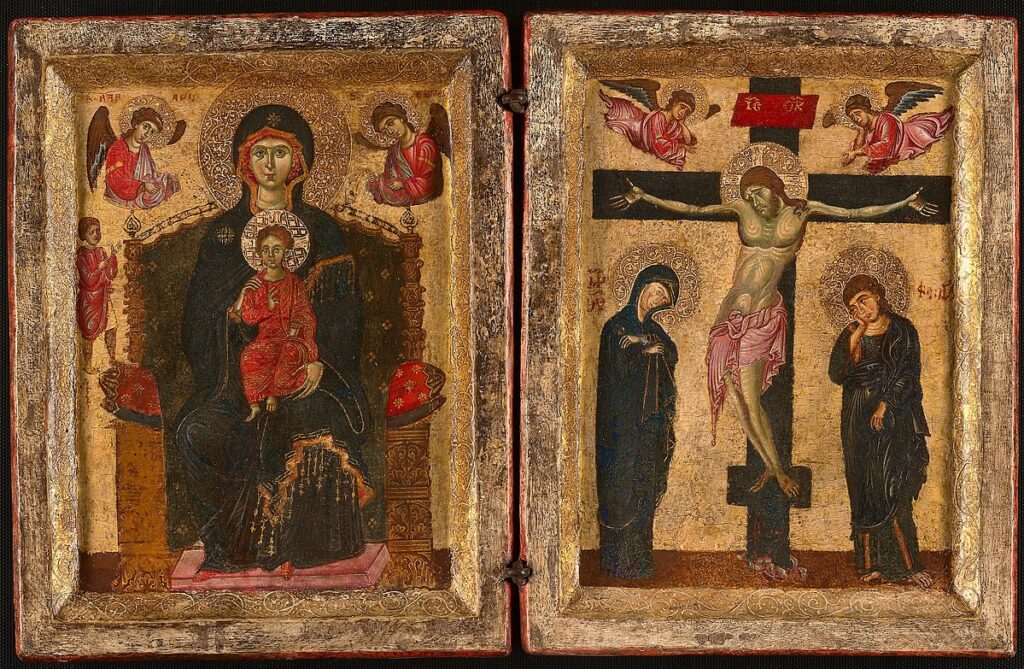
The Diptych of the Virgin and Child Enthroned and the Crucifixion is a striking example of medieval artwork. Created around 1275-1280, this piece features tempera and gold on wood panels with gilded plaster pastiglia.
The diptych is comprised of two panels that are frequently paired in Gothic ivories: one depicting the Virgin Mary seated with the Christ child, and the other showing Christ’s crucifixion. The artist’s attention to detail enhances the emotional quality of the Crucifixion scene, as blood spurts from Christ’s side and pierces the Virgin’s breast like a knife.
It is believed that this diptych was produced in the Latin Kingdom established in the Holy Land by crusaders due to its mixture of Eastern and Western elements. In addition to inscriptions in both Latin and Greek, it exhibits a blending of styles indicative of cultural exchange during this time period.
These details make The Diptych of the Virgin and Child Enthroned and The Crucifixion an essential example for understanding medieval religious artistry.
19. Rest During The Flight Into Egypt – Gentile Da Fabriano
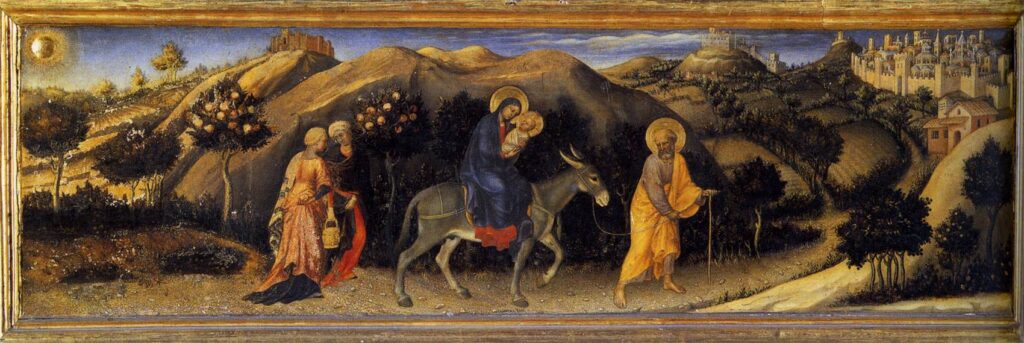
Gentile da Fabriano was an Italian painter known for his participation in the International Gothic painter style. His skill as a painter is evident in his work entitled Rest during the Flight into Egypt, which depicts Mary, Joseph, and the infant Jesus resting during their journey to Egypt. The Holy family is normally shown in a landscape, but Gentile’s version includes figures, animals, and a vast landscape. It is part of several gospel stories surrounding Christ’s birth that were retold during the Middle Ages and Renaissance.
Gentile was highly regarded for his use of real gold to achieve many subtle lighting effects in his work. His exceptional painting style made him renowned not only in Tuscany where he worked mostly but also throughout Italy. Even after he visited Florence in 1419 and became influenced by humanism through its art movement, he remained true to the International Gothic style.
Rest During the Flight into Egypt stands out amongst his notable works such as Adoration of Magi from Strozzi Altarpiece (1423) or The Flight into Egypt with its incredible detail that shows depth and complexity unusual for pieces created during this time period. Beyond spiritual content Rest on Flight embodies tranquility through simplicity combined with intricate details that evoke peacefulness fittingly contributing to Medieval Art’s qualities described as ethereal elegance characterized by divine themes depicted using original techniques displaying artistic talent at its best.
